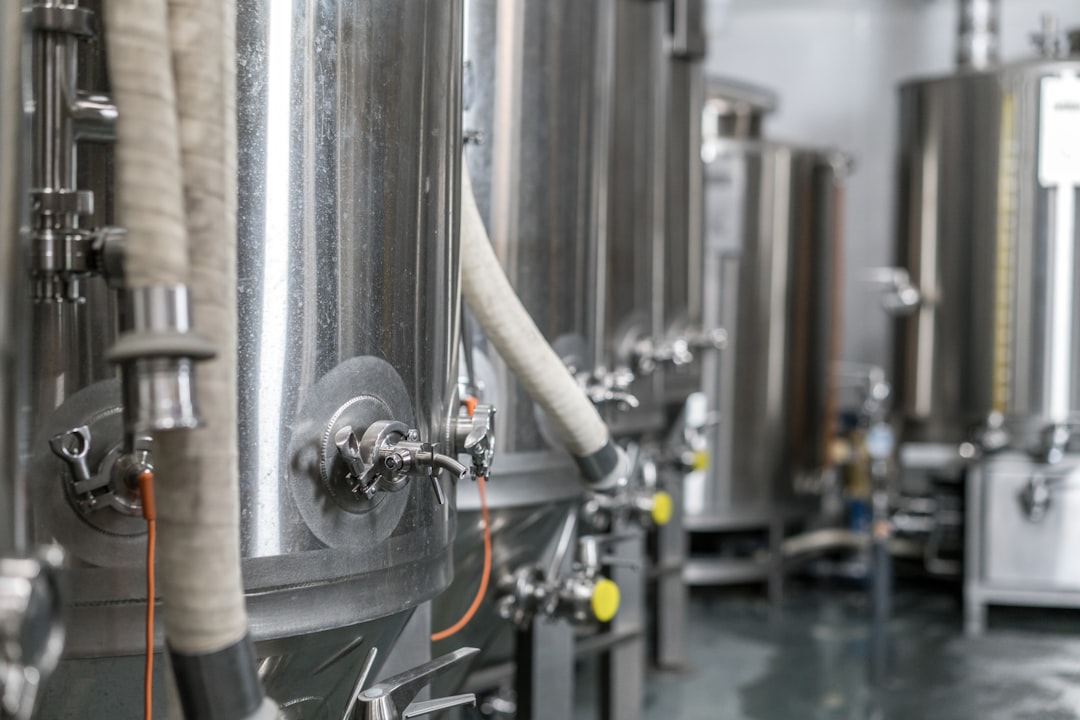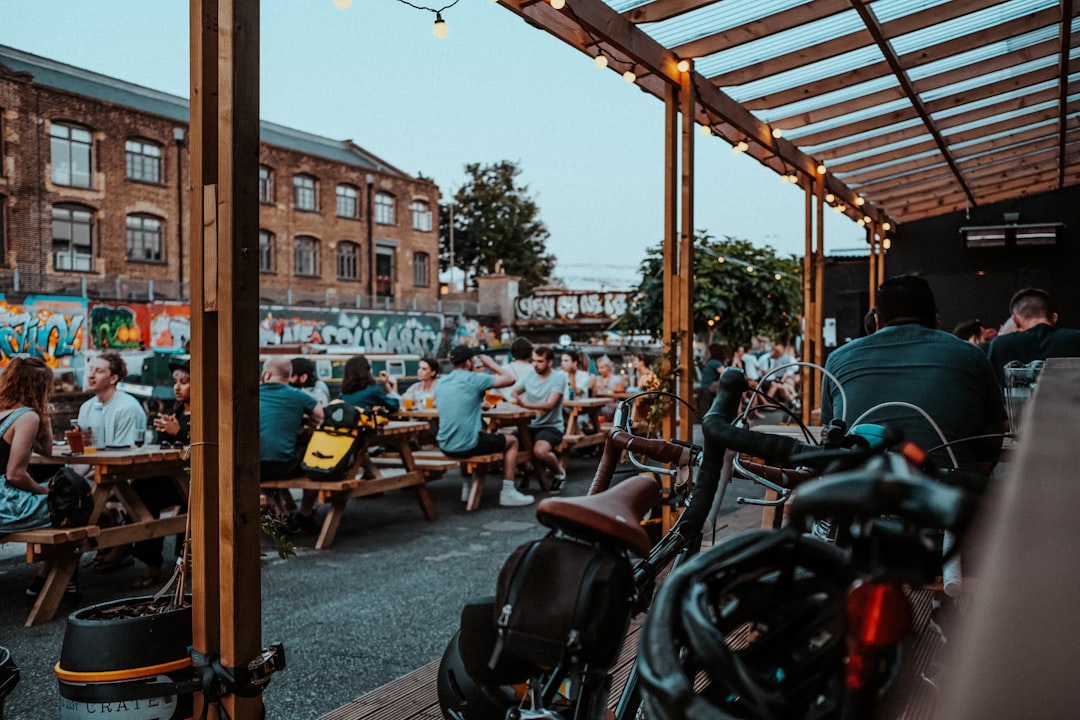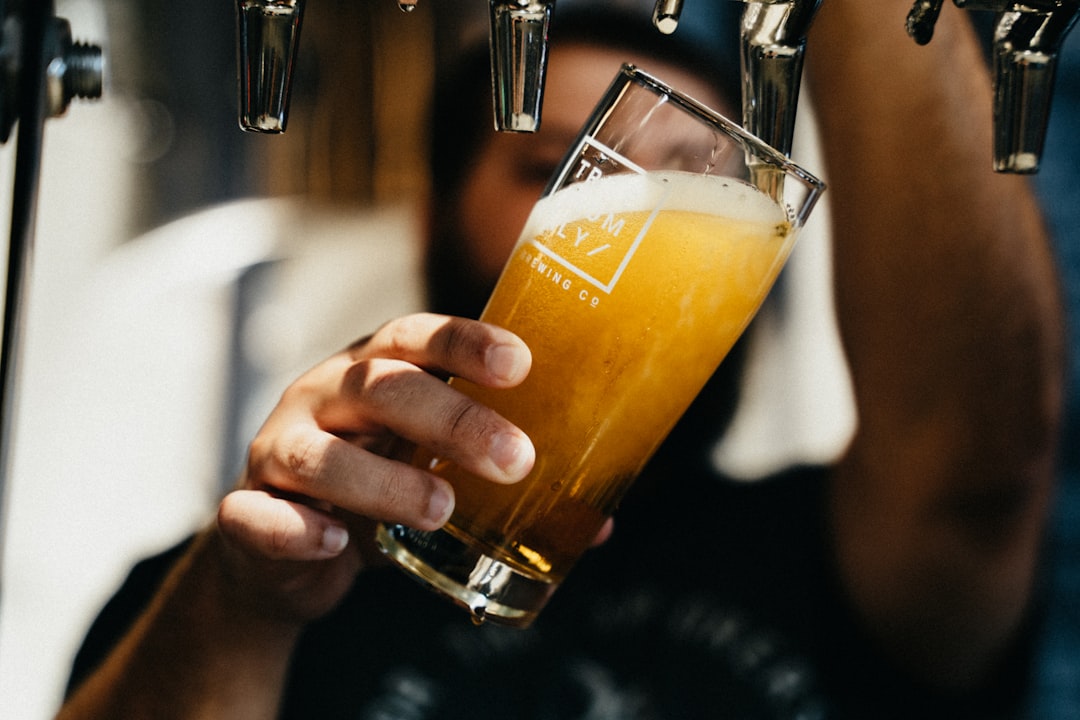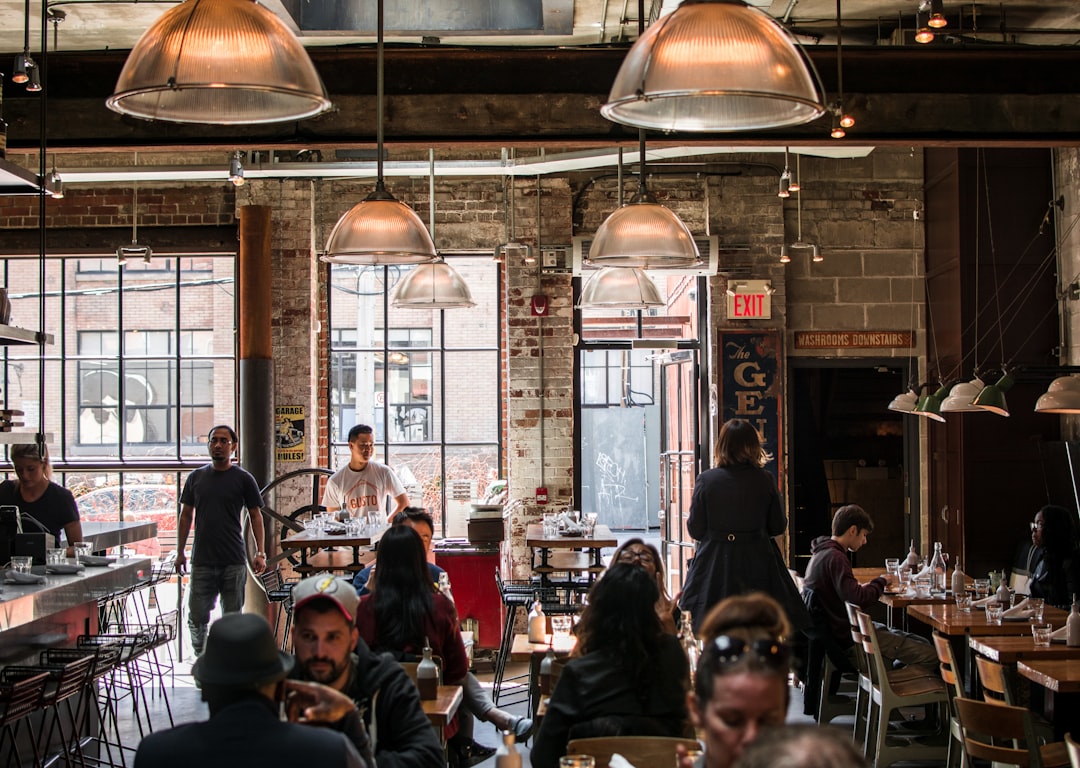

Engage prospects with a scan and streamline customer engagement with FREE QR code marketing tools by Sona – no strings attached!
Create a Free QR CodeFree consultation

No commitment

Engage prospects with a scan and streamline customer engagement with FREE QR code marketing tools by Sona – no strings attached!
Create a Free QR CodeFree consultation

No commitment
Breweries play a pivotal role in local economies and cultural landscapes, evolving from traditional operations into modern, community-focused businesses. However, this transformation brings challenges: missed opportunities to capture high-value leads from taproom visitors or event attendees, a lack of clear attribution between physical engagement and digital actions, and increasing pressure to stand out in a competitive market. Fragmented data and outdated analog processes also make it difficult to gather actionable insights.
QR codes offer a powerful solution for breweries eager to overcome these barriers. By connecting physical touchpoints such as signage, menus, or packaging to interactive digital experiences, breweries can capture visitor intent in real time and ensure that every interaction is tracked. QR journeys guide beer enthusiasts from in-person engagement to digital menus, reviews, or interactive storytelling, closing the gap between real-world visits and measurable outcomes.
With QR code integration, breweries can adopt a data-driven approach to marketing and customer management that was previously out of reach. Scannable codes transform every coaster or label into a two-way communication channel, enabling precise targeting, real-time feedback collection, and seamless audience segmentation. This guide explores how breweries are leveraging QR solutions to turn offline curiosity into digital loyalty and measurable growth, eliminating data silos, reducing missed revenue, and powering every toasting moment with insight.

Connecting offline encounters with digital engagement is a common operational gap for breweries. Guests browse a flight board, attend a trivia night, or grab a 4-pack from the cooler, then leave without opting into a loyalty program or sharing feedback. Paper comment cards, clipboards for newsletter sign-ups, and untracked flyers have limited reach and create manual work that rarely produces actionable data.
A strategic QR code implementation addresses this gap with a consistent, measurable process that aligns to business goals. Start by mapping your physical touchpoints to clear digital calls to action, then make every scan count. Deploy codes where interest is naturally highest, and use dynamic links to adjust messaging as inventory shifts or events change. This approach replaces analog tasks with automated flows and gives you a continuous read on guest interest and behavior. For practical ideas, see 23 ways to sell more beer.
By turning physical assets into digital entry points, brewery teams can streamline sign-ups, gather feedback without interrupting service, and drive consistent follow-up. The result is an easier path from curiosity to conversion that reduces staff burden while expanding your marketing reach and data quality.

Breweries often rely on tactile, visual experiences like chalkboard menus, posters, and branded coasters. These materials create ambiance, but they do not always enable a quick action or capture contact information. When guests leave, their interest fades and attribution becomes impossible. QR codes connect that analog environment to a frictionless digital layer so every impression can drive a next step.
QR codes matter because they align with guest behavior and staff workflows. Guests already have a phone in hand for photos and payments. A QR code positioned with a clear reason to scan gives them a single-tap path to what they want: a menu, today’s releases, a special offer, or an RSVP. Managers get a live view of what is working, and marketers gain attribution on placements that used to be guesswork.
By grounding each physical asset in a measurable digital action, breweries gain both agility and accountability. You will be able to change creative direction without reprinting, target follow-ups based on behavior, and attribute sales to specific touchpoints.

Breweries benefit from a mix of QR formats that map to different goals across the taproom, retail shelves, and events. The key is to choose formats that reduce friction and match the context in which guests are scanning. You can manage all formats in one place with Sona QR and switch destinations as your campaigns evolve.
For in-taproom use, web links and forms dominate because they are the fastest path to engagement. For trade relationships and partnerships, vCards and prefilled email or SMS shortcuts save time and reduce errors. For guest comfort, Wi-Fi access QR codes are a nice touch that remove a common barrier to dwell time and sharing.
Dynamic QR codes let you edit destinations after printing and track results by code. Static codes work for permanent resources like your homepage, but they lack analytics and flexibility. Most brewery use cases benefit from dynamic codes so you can swap in seasonal content and capture data without reprinting.

Growth begins where your audience already engages with your brand. Breweries have a rich mix of physical touchpoints that can become digital gateways for sign-ups, reviews, upsells, and event participation. The key is to meet guests where they are and match the call to action to their moment of interest.
Start with high-traffic areas in your taproom and expand to retail and community placements. Each code should have a specific outcome and a benefit-driven message. With unique codes for each placement, you will understand which surfaces deliver the best engagement and where to invest next.
By placing codes at moments when curiosity peaks, you capture attention that would otherwise fade. Over time, these scans build a unified dataset across on-premise, off-premise, and event channels that informs both creative and operational decisions.
QR codes shine when they remove friction and create a clear bridge from interest to action without staff intervention. In a busy taproom, staff have limited time to promote events or collect emails. QR codes make it easy for guests to opt in, for managers to track what is resonating, and for marketers to retarget based on real behavior.
The most effective use cases align with everyday brewery activities and guest desires. Focus on the moments guests are hungry for information or perks, and match the destination to that intent. Then measure each outcome so you can optimize placement and messaging.
These use cases turn guesswork into measurable engagement and give teams the data they need to improve experiences and drive targeted follow-up without adding burden to staff.
Every scan is a signal that reveals what a guest cares about, where they engaged, and when they are most responsive. With intentional QR deployment, you can capture those signals and auto-build segments that fuel high-performing retargeting and lifecycle marketing. The goal is to stop treating all guests the same and start tailoring messages to their interests and stage in the journey.
Segmenting by context and behavior is especially powerful for breweries that juggle locals, tourists, event-goers, and retail shoppers. Each audience behaves differently and responds to different offers. Distinguish them at the scan, then feed segments into your CRM and ad tools for automated follow-up. Explore Sona QR’s use case library for additional segmentation ideas.
When QR-driven segments power your email, SMS, and paid media, your messages reach the right people with the right content. That relevancy delivers higher open rates, lower unsubscribe rates, and better return on ad spend.
QR codes become more powerful when they connect your print, in-person, and digital programs into one cohesive funnel. Rather than living as isolated placements, codes can tie together menus, posters, direct mail, social posts, and events so that every campaign captures intent and moves people toward a measurable outcome.
Begin by mapping your channels to specific actions and retention goals. Use unique codes per asset so you can see which channels drive the most engagement, then route those scans into segmented nurture paths. Sona QR centralizes all codes and performance data so you can iterate without complexity.
QR codes serve as the offline onramp to your digital marketing engine and provide a new layer of data across channels that used to be hard to measure. With Sona QR, you can manage all codes in one dashboard, monitor performance, and sync scan data with your CRM and ad platforms to create a connected audience journey.
A structured approach keeps your QR program consistent and scalable across new releases, events, and seasons. Use the following steps to plan, deploy, and optimize each campaign while keeping staff aligned and data tight. Each step includes brewery-specific examples to speed implementation.
Begin with a single business goal and a clear action you want the guest to take. For example, drive 100 RSVPs for the Oktoberfest kickoff, gather 50 new loyalty enrollments this week, or increase tour bookings by 25 percent this month. Tie the QR code to a specific destination designed to produce that outcome.
Think about seasonality and product cycle. A harvest ale release might benefit from a story-driven landing page with a pre-order link. A slow midweek night might call for a scan to claim a weekday special. When you define the purpose upfront, you can craft the call to action and incentive that fit the moment.
Decide whether your need is flexible and trackable or fixed and permanent. Dynamic codes are ideal for iterative campaigns because they let you change destinations and capture analytics without reprinting. Static codes make sense for evergreen uses like your homepage or Wi-Fi access where tracking is less critical.
For most brewery campaigns, dynamic codes are the right choice. They allow you to update the link when a limited release sells out or when you want to switch from ticket sales to a thank-you page after an event. With Sona QR, you can manage both types and tag each code by campaign, placement, and goal.
Brand your codes with a logo and colors, and place them inside a clear visual frame. Use a short, specific call to action near the code like Scan for today’s taplist, Scan to join the mug club, or Scan to vote for next week’s cask. Size matters: at least 0.8 inches for coasters and table tents, 1.5 inches or larger for posters and windows, and high contrast for readability.
Test scannability before printing widely. Check multiple phones and camera apps at different distances and lighting conditions. If the code will be on a glossy surface like a laminated menu, test for glare. If it will be on a curved can, ensure the code is large enough and not distorted around the bend. Sona QR can generate print-ready vector files to keep edges crisp at any size. For placement inspiration, check the best ways to display your QR codes.
Choose placements based on where your audience lingers and how they behave in that environment. In the taproom, guests are seated and can spend 10 to 20 seconds scanning and reading. On a festival floor, attention spans are shorter, and the call to action should be punchy and incentive driven.
Match each placement to a context-specific destination. A chalkboard by the entrance can drive to events and the weekly schedule. Coasters can drive to feedback and review prompts. Packaging can link to brew stories and retailer maps. Window clings can highlight tonight’s specials or live music calendar for passersby. Use unique codes per placement to keep data clean.
Use analytics to close the loop. In Sona QR, track scans by time, device, and location, then compare conversion rates across placements and creative variants. Add UTM parameters to each destination so you can attribute traffic in Google Analytics and your CRM.
Iterate based on what the data shows. If coasters drive high scans but low conversions, test a shorter form or a stronger incentive. If window clings underperform, try a larger size or a clearer call to action. Run simple A and B tests on landing page headlines, incentives, or imagery. Build a cadence of weekly or monthly reviews and share wins with staff so they can champion what works.
Engagement is only the beginning. The real power of a QR program is the ability to tie scans to outcomes like sign-ups, bookings, coupon redemptions, and revenue. Without this visibility, you are left guessing which placements matter and which offers move the needle. With the right stack, you can attribute revenue to specific codes and optimize spend with confidence.
Sona QR captures granular scan data at the code level so you can connect actions across the guest journey. Sona.com adds identity resolution and multi-touch attribution to link anonymous scans to known buyers over time—see Single vs Multi-Touch Attribution Models. Together, they turn a QR program into a performance engine that informs creative decisions and budgets.
This connected framework gives marketing and operations teams the clarity they need to plan with confidence. You can prove impact, shift spend to the highest-performing channels, and forecast demand for releases with better precision.
After the initial wins, many QR programs plateau because placements are duplicated, incentives are generic, or follow-up flows are missing. The next level of performance comes from smarter tagging, stronger calls to action, and automation that continues the conversation after the scan.
Focus on specificity and momentum. Make each QR asset feel purposeful and rewarding, then route scans into sequences that build habit. Educate staff so they can promote the why behind each code and help guests get value right away.
With these practices, your QR program will continue to deliver fresh insights, higher engagement, and measurable business impact quarter after quarter.

Breweries across sizes and regions are using QR codes to solve real challenges, from anonymous foot traffic to event promotion. The common thread is relevance: each code exists to serve a specific guest need and business goal. Use the ideas below as a starting point and adjust the destination and incentive to your brand voice.
Consider how each example ties to a measurable outcome. The strongest campaigns make it easy to capture data at the moment of interest and route it into segmented follow-ups that extend the experience beyond a single visit.
The lesson is simple: lead with guest value and make the next step effortless. A small placement backed by a clear benefit can transform the performance of your entire marketing mix.
Even well-intentioned QR deployments can underperform when codes are duplicated, calls to action are vague, or destinations are outdated. The most frequent pitfalls are easy to avoid with a little planning and a cadence of audits. The aim is to keep placements fresh, scannable, and attached to compelling outcomes.
Treat QR codes like any other campaign asset with a lifecycle. Plan the rollout, set success metrics, monitor performance, and retire or refresh codes on a schedule. When staff understand the purpose and timing, they can reinforce the message and help guests take action.
By embracing these practices, breweries avoid common pitfalls and build a QR culture that feels native to the taproom experience and rewarding to guests.
For breweries in a competitive landscape, QR codes are more than a digital shortcut; they are a bridge to deeper customer relationships, measurable marketing, and greater agility. By integrating QR strategies across every touchpoint, breweries solve the challenges of missed prospects, anonymous visitors, and fragmented data, uniting unique brand experiences with precise digital follow-up. With each scan, breweries gain the insights and flexibility to personalize every interaction, reduce churn, and build lasting loyalty, forming a data-rich foundation for sustainable growth.
Traditional guestbooks and email sign-ups often fail to capture purchase intent or segment customers deeply, making it hard to retarget offers or nurture leads. QR campaigns change that by tagging each scan with context. Over time, this creates a rich profile of preferences that you can use to tailor communications and offers.
Breweries can segment in ways that map to products and programming. Locals versus tourists, IPA enthusiasts versus lager traditionalists, taproom visitors versus retail buyers: all of these distinctions can be inferred from scan behavior. When these segments sync into your CRM, you can send timely messages that feel personal rather than generic.
This segmentation framework ensures that no high-value prospect is lost. You will be able to deliver the right message at the right moment and increase conversion across sign-ups, events, and sales.
Disconnected print and digital efforts lead to inconsistent messaging and wasted resources. QR codes provide the connective tissue that aligns your taproom, retail, and community marketing into one funnel. When each asset feeds intent data into the same system, you can orchestrate campaigns that feel synchronized to guests and efficient for teams.
Think of QR codes as triggers that activate workflows across channels. A scan on a coaster can add a guest to an event list and a social audience. A scan on a retail label can open a reordering page and tag the buyer for location-based offers. When you design this approach across your entire mix, you unlock compound gains.
With a platform like Sona QR, you can manage all of these codes centrally, monitor performance across channels, and sync scan data with your CRM and ad platforms. The result is a cohesive offline-to-online journey that boosts both engagement and attribution.
A major frustration for breweries is the inability to tie in-person interaction to sales or loyalty outcomes, leaving decisions to guesswork. QR systems fix this by instrumenting the guest journey with events you can track, test, and improve. When scan data flows into your CRM and attribution tools, you can see how offline activations influence revenue.
Align your analytics with business questions. Which placements drive the most sign-ups or RSVPs. Which product stories lead to higher add-on sales. Which events generate repeat visits. With Sona QR and Sona.com, you can move from surface-level metrics to insights that guide strategy and budget—see First-Touch vs Last-Touch Attribution Models.
This connected approach provides granular visibility from scan to sale. It helps you invest where outcomes are strongest and refine campaigns systematically rather than reactively.
QR programs grow strongest when they add fresh reasons to scan, maintain data quality, and keep the post-scan journey active. Choose a few practical practices that fit your taproom flow and campaign mix, then build on them as you see results.
Innovation does not always require new surfaces. Small creative updates can reignite attention, such as a seasonal coaster series with rotating QR rewards or a rotating poll that invites guests to influence next month’s release.
You can generate and track your first QR codes for free with Sona QR. Sign up, deploy a few test placements, and let data guide your next iteration.

Leading breweries have moved beyond basic QR uses to address meaningful operational and marketing gaps. What sets these examples apart is the way each scan ladders up to a bigger strategy: building community, guiding decisions, or fueling growth programs with clean data.
Use these scenarios to spark ideas and adapt them to your brand size, audience mix, and goals. Small touches can outperform grand gestures when they meet a real need in the guest journey.
These examples show how QR strategies can transform marketing and engagement challenges into measurable wins when they are anchored in clear outcomes and staff-friendly execution.
Consistency, clarity, and context are the pillars of a strong QR program. Inconsistent design, vague incentives, or poor placement quickly erode scan rates. Conversely, clear value propositions, high-contrast codes, and context-aware calls to action deliver reliable engagement that compounds over time.
A simple quarterly audit helps maintain momentum. Review code destinations, scan performance, and message alignment. Archive or update any asset that no longer fits your goals. Celebrate top-performing placements with the team so everyone understands what good looks like.
By building a culture that values QR-driven engagement, you can surface signals that would otherwise be missed and reclaim opportunities at every touchpoint.
For breweries in a competitive landscape, QR codes are more than a digital shortcut; they are a bridge to deeper customer relationships, measurable marketing, and greater agility. By integrating QR strategies across every touchpoint, breweries solve the challenges of missed prospects, anonymous visitors, and fragmented data, uniting unique brand experiences with precise digital follow-up. With each scan, breweries gain the insights and flexibility to personalize every interaction, reduce churn, and build lasting loyalty, forming a data-rich foundation for sustainable growth.
Start creating QR codes for free: https://www.sqr.me/register
QR codes have transformed the brewery industry from simple product labels into dynamic engagement tools that deepen customer connections and boost sales. Whether it’s enhancing taproom experiences, promoting seasonal brews, or delivering exclusive content, QR codes turn every bottle, coaster, and menu into an interactive gateway that drives customer acquisition and loyalty.
Imagine instantly knowing which promotions spark the most interest or which tasting events bring in new patrons—and being able to adjust your marketing on the fly. With Sona QR, you create dynamic, trackable QR codes in seconds, update campaigns without reprinting, and link every scan directly to revenue growth. No guesswork, just smarter, more profitable brewery marketing.
Start for free with Sona QR today and turn every scan into a loyal customer, a memorable experience, and a measurable business win.
QR codes connect physical touchpoints to digital experiences, enabling breweries to capture visitor intent in real time, track every interaction, automate workflows, gather actionable data, and reduce staff burden.
QR codes placed at tour stations provide videos and stories that increase guest education, dwell time, and tour bookings while allowing breweries to track interest by location.
Breweries link QR codes on packaging, menus, and tap handles to digital menus, brew stories, event sign-ups, loyalty programs, and special offers that engage customers and drive sales.
Breweries use QR codes for instant taproom feedback, self-guided tours, event RSVPs, loyalty enrollments, packaging-driven storytelling, voting polls, photo contests, and Wi-Fi access to create interactive experiences.
By tracking scan volume, conversion rates, location, device data, and revenue attribution through platforms like Sona QR, breweries can analyze engagement, test variations, and optimize campaigns based on real-time insights.
Use Sona QR's trackable codes to improve customer acquisition and engagement today.
Create Your FREE Trackable QR Code in SecondsJoin results-focused teams combining Sona Platform automation with advanced Google Ads strategies to scale lead generation

Connect your existing CRM

Free Account Enrichment

No setup fees
No commitment required

Free consultation

Get a custom Google Ads roadmap for your business






Launch campaigns that generate qualified leads in 30 days or less.
